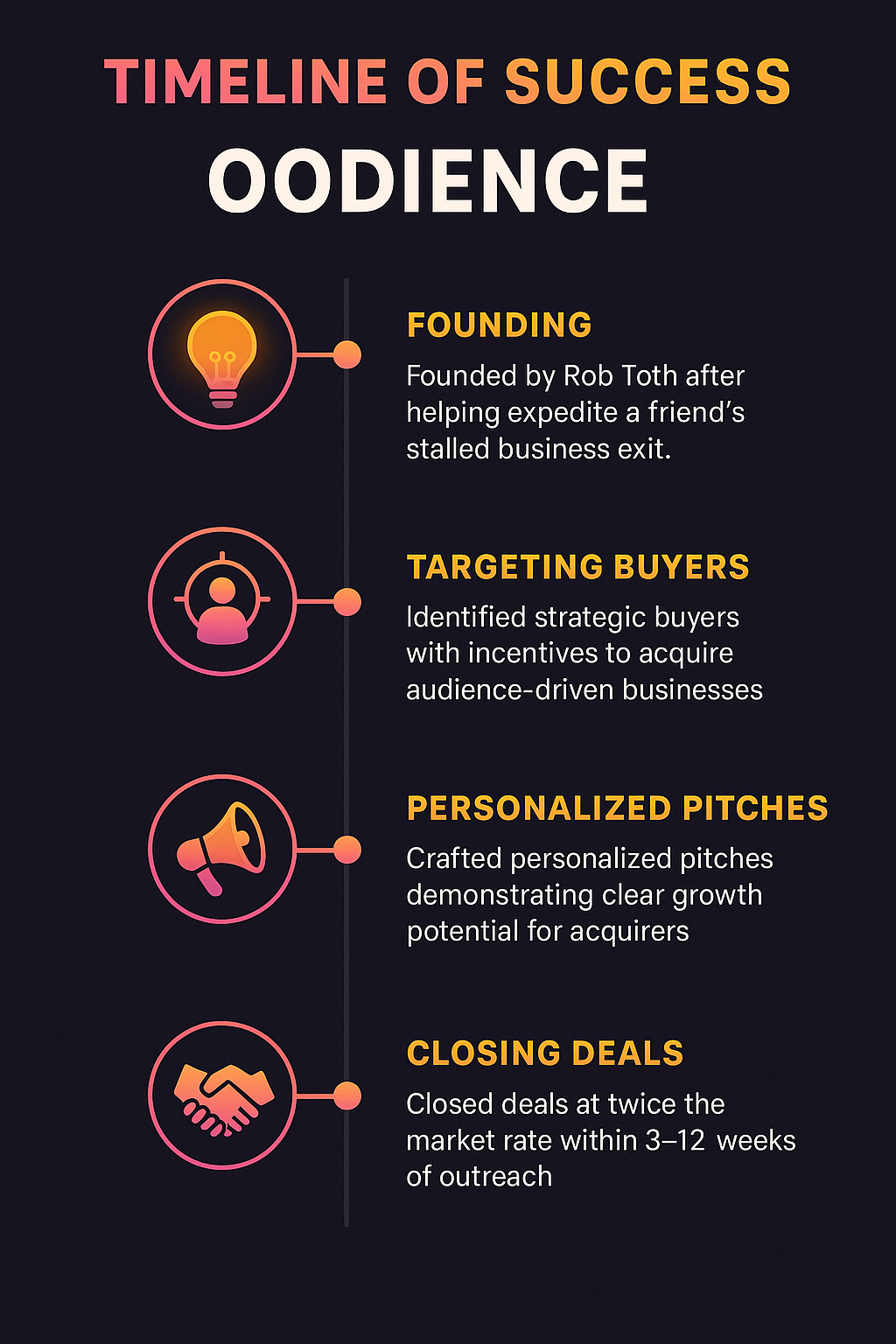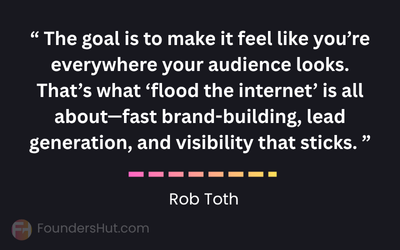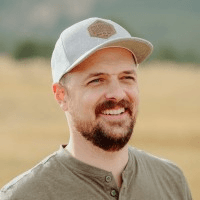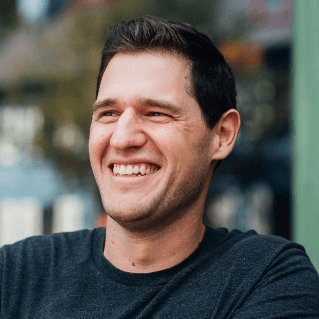How OODIENCE Uses Demand Gen to Secure Top Exit Valuations


Business Description
Table of Contents
Navigate through the case study sections
Executive Summary
Case Study Content
Background
When you want to sell a content-rich website or newsletter, you expect to list on a broker platform and wait. OODIENCE chose a different path. Instead of sending a prospectus to a pool of price-shopping buyers, they identify acquirers with a clear strategic need. This move reshaped how deals close and at what multiples.

Identifying Ideal Sellers and Buyers
Rob Toth founded OODIENCE after a friend’s exit stalled for four months. He stepped in, ran a targeted campaign, and locked an above-ask offer in three weeks. That experience set the stage: they would focus strictly on media, blogs, newsletters, podcasts, and e-learning properties valued between $300K and $30M. Geography? Anywhere English is spoken. But the key is audience strength and diversified income. If those align, OODIENCE builds a list of potential buyers who benefit by at least 20% from the acquisition.
Demand Generation vs. Traditional Brokering
Traditional brokers create a CIM, blast it to an email list, and hope. OODIENCE acts like a sales team. First, they research, tapping CRM and Sales Navigator to map out studios, public companies, niche service providers, and more. Then they craft personalized pitches that show how the acquisition drives market share or upsells existing products. That focused outreach consistently yields offers at least twice what a general buyer would pay.
Structuring Valuations
Valuation at OODIENCE mixes data, comparables, and market sentiment. They analyze traffic sources, revenue mix, audience assets like email lists, and potential integration costs for an acquirer. For example, if replacing the founder’s labor costs $50K per year, that is factored in. But when a strategic buyer will pay $500K over market, it’s a win. They avoid deals where owners can’t articulate transition plans or where IP ownership is unclear.
Real-World Wins
One campaign sold an animation B2B site nearly double market rates to a studio looking to expand content marketing. Another placed a high-school print and digital magazine with an edtech firm at full ask after general buyers balked. These deals close in 6–12 weeks without traditional loan financing. Often they’re all-cash or seller-financed, avoiding bank processes.
Key Advice for Sellers
Building an email list or private community is non-negotiable. Avoid 100% SEO-driven sites. Secure clear content rights, clean up contractor agreements, and map out post-sale workflows. Then think like a buyer: what happens in week one under new ownership? Having SOPs, team commitments, and account transfers spelled out boosts buyer confidence.

Outlook for Media Exits
Post-Google updates, pure ad-driven blogs struggle. But mixed revenue sites, audience data, and scale-ready teams keep commanding high multiples. OODIENCE clients who diversified, adding e-courses, licensing, or software, fare best. The niche minority of publishers who invest in audience assets continue to see strong interest.
Business Plan
Market Problem
Selling online businesses often relies on passive listings in broker platforms, leading to long wait times and subpar valuations. Sellers…
See the full market problemSolution
OODIENCE revolutionizes the process by adopting a proactive demand generation model, focusing on strategic buyers who have a vested…
See the full solutionTarget Market
Content Creators
Individuals or companies with media properties looking to sell for maximum value.
Investors
Those interested in acquiring established online businesses for portfolio expansion.
Competitors
Business Broker Platforms
Traditional methods that often rely on passive listings and broad outreach.
Online Marketplaces
Sites that allow sellers to list their businesses but lack personalized buyer engagement.
Competitive Advantage
OODIENCE's unique focus on demand generation sets it apart from traditional brokers. By acting as a dedicated sales team, OODIENCE…
See the full competitive advantageSales and Marketing
To attract potential sellers, OODIENCE will implement a multi-channel marketing strategy. This includes content marketing through blogs and…
See the full Sales and marketing planSuccess Milestones
Establish Online Presence
Launch website and social media profiles to start building brand awareness.
Develop Marketing Strategy
Create a comprehensive marketing plan focusing on content and social media.
Key Takeaways
- 1Specialized demand generation yields above-market exit valuations by targeting buyers who have a clear growth incentive.
- 2OODIENCE focuses on audience-driven media businesses valued from $300K to $30M, including blogs, newsletters, podcasts, and e-learning.
- 3By mapping strategic acquirers via CRM and Sales Navigator, they secure offers twice the market rate in as little as three weeks.
- 4Thorough valuation includes revenue trends, audience assets, IP ownership, and integration costs like founder replacement salary.
- 5Successful exits often close as all-cash or seller-financed deals without SBA loans, simplifying the transaction process.
- 6Sellers must own their email lists, diversify traffic sources, document contractor IP rights, and plan a clear post-sale transition.
Key Facts
Tools & Technologies Used
Premium Content Locked
Subscribe to access the tools and technologies used in this case study.
Unlock NowHow to Replicate This Success
Premium Content Locked
Subscribe to access the step-by-step replication guide for this case study.
Unlock NowInterested in Being Featured?
Share your success story with our community of entrepreneurs.
Explore More Case Studies
Discover other inspiring business success stories

How Joel Young Turned Voice-Over Side Hustle Into a $1.5M Video Empire
Joel Young went from a debt-strapped pastor to founding JumpStart Video, a bootstrapped studio that now brings in up to ...
JumpStart Video

How Biaheza Made $1K in 8 Days with a Skincare Dropshipping Hack
In late May 2023, entrepreneur and YouTuber Biaheza identified a low-competition skincare niche and built Skinfion, a dr...
Skinfion

How One Blog Post Generated Over $20,000 in Passive Income
In this case study, we examine how music teacher Jake Posko created a niche guitar blog and published one detailed artic...
JakePosko.com